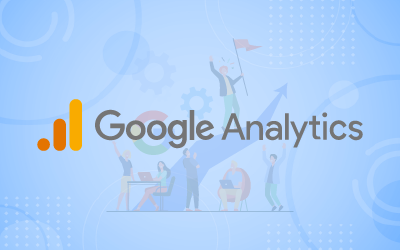What is Search Engine Marketing (SEM)?

Search engine marketing, or SEM, is a form of internet marketing used to increase visibility in search engine results pages (SERPs) through the use of paid advertising. It is a fast-growing and highly effective method of online advertising that allows businesses to effectively target potential customers.
Search engine marketing works by targeting users who are searching for specific terms, products, or services. The goal is to create ads that are relevant to the search terms and draw more attention to the business’s website. In this way, businesses are able to generate more qualified leads and increase their conversion rate.
Search engine marketing is made up of two components: search engine optimization (SEO) and paid search. SEO is the process of optimizing a website to increase its visibility in SERPs for organic (unpaid) search results. Paid search involves the use of pay-per-click (PPC) advertising campaigns to drive more traffic to your website.

When it comes to SEM, businesses have a number of options to choose from. They can use organic search engine optimization to improve their website’s ranking in SERPs or they can use paid search to drive more targeted and qualified traffic to their site. They can also combine organic and paid search efforts to maximize their results.
Search engine marketing can be a highly effective way to reach potential customers and increase sales. It is important to remember, however, that SEM requires a certain level of expertise and time to be successful. Businesses should work with an experienced SEM team who understands the ins and outs of the process to ensure they get the best results.
Search engine marketing is an ever-evolving field that requires businesses to stay on top of the latest trends and strategies. With the right approach, businesses can effectively use SEM to increase visibility, generate leads, and boost their sales.
How does SEM Works?
Search engine marketing (SEM) is a powerful tool for businesses of all sizes. It can help increase website traffic and visibility, which can result in more customers, higher conversion rates, and increased revenue.
But before you can begin to benefit from SEM, you need to understand how it works. To do that, you first need to be familiar with the two main types of search engine marketing—organic search engine optimization (SEO) and paid search engine marketing (PPC).
Organic SEO
Organic SEO is the practice of optimizing your website for higher rankings in organic (non-paid) search engine results pages. It involves a variety of techniques, such as on-page optimization, off-page optimization, and content marketing.

On-page optimization involves optimizing your website’s content and structure. This includes creating keyword-rich content, optimizing title tags and meta descriptions, and improving the overall user experience.
Off-page optimization involves link-building activities to increase the number of inbound links to your website. This can include link exchanges, directory submissions, social media marketing, and guest blogging.
Content marketing involves creating high-quality content that is both informative and engaging. This content should be relevant to your target audience and should contain keywords related to your niche.
Paid Search Engine Marketing
Paid search engine marketing, also known as pay-per-click (PPC) advertising, is a form of advertising where you pay for each click on your ad. With PPC, you can target specific keywords and phrases that are related to your product or service.
When someone searches for those keywords, your ad will appear on the top of the search engine results page. The more relevant your ad is to the search query, the more likely it is to be clicked on.
The cost per click (CPC) varies depending on the competition for the keyword. The higher the competition, the more you will have to pay per click.
How to Optimize Your SEM Campaigns
Now that you understand the basics of SEM, you can start optimizing your campaigns for better results. Here are a few tips:
1. Research Keywords: Research the keywords that your target audience is using and create campaigns based on those keywords.

2. Monitor Performance: Monitor the performance of your campaigns regularly to identify areas of improvement.

3.Test Different Ad Formats: Try different ad formats to see which ones perform best.
4. Use A/B Testing: Test different versions of your ads to see which ones are more effective

5.Make Landing Pages Relevant: Make sure your landing pages are relevant to your ads and contain the same keywords.
6. Utilize Remarketing: Use remarketing to reach people who have already visited your website.

7. Track Your Results: Track your results on a regular basis to ensure your campaigns are performing well.

Following these tips will help you optimize your SEM campaigns and get the best results possible. With the right strategies in place, you can increase website traffic, leads, and sales.
SEM Strategy
Creating an effective SEM strategy can be a daunting task. There are hundreds of different tactics available and determining which ones are the most effective for your business can be difficult. That’s why it’s important to develop a clear, comprehensive SEM strategy that will serve as the foundation for all of your SEM efforts.
Step 1: Set Your Goals
The first step of any SEM strategy is to establish your goals. What do you hope to achieve with your SEM campaign? Are you looking to increase website traffic, generate leads, or increase brand awareness? Once you have a clear understanding of your goals, you can begin to develop your strategy.
Step 2: Research Keywords
Once you’ve established your goals, it’s time to start researching keywords. This is an essential step in any SEM strategy because it will help you identify the terms and phrases that your target audience is using to find your products or services. You can use various keyword research tools, such as Google Keyword Planner, to find the most relevant and effective keywords to target.
Step 3: Create Ad Copy
Once you’ve identified the keywords you want to target, it’s time to start creating ad copy. Your ad copy should be concise, clear, and convincing. Use language that resonates with your target audience, and make sure to include your keywords in your headlines and body copy.
Step 4: Bid for Ads
After you’ve created your ad copy, it’s time to start bidding for ads. This is the process of entering into an auction with other advertisers to determine who will have their ads displayed in search engine results pages. You’ll need to decide how much you’re willing to pay for each click and bid accordingly.
Step 5: Monitor Performance
Once your ads are running, it’s important to monitor their performance to ensure they’re reaching your goals. You’ll want to track metrics such as cost per click, click-through rate, and conversions. This will help you determine which tactics are working and which need to be tweaked.
Step 6: Refine Your Strategy
Once you’ve monitored your performance, it’s time to refine your strategy. This involves making adjustments to your ad copy, targeting, and bidding strategy to ensure your ads are reaching the right people and performing as effectively as possible.
Creating an effective SEM strategy can be a time-consuming and complex process. However, by following the steps outlined above, you can ensure that your strategy is effective and successful. With a solid SEM strategy in place, you can reach your target audience, increase website visibility, and generate more leads and sales.
Best SEM Tools to Use
Here are some of the best SEM tools that you can use to improve your search engine marketing efforts:
1. Google Ads: Google Ads is a popular SEM tool that allows you to create, manage, and track your search engine marketing campaigns. It's easy to use and provides detailed reports, so you can measure the success of your campaigns.
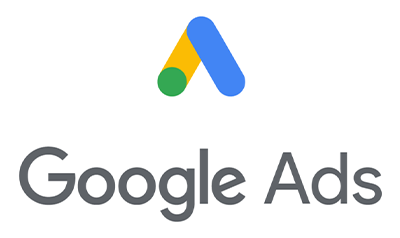
2. SEMrush: SEMrush is a comprehensive SEM tool that helps you to track your competitor's performance and get insights into their strategies. It also offers keyword research, backlink analysis, and other features to help you optimize your campaigns.
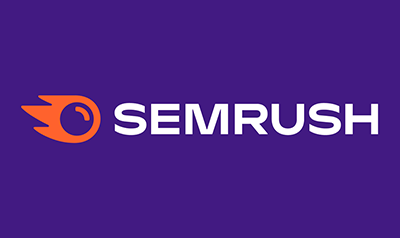
3. Bing Ads: Bing Ads is a powerful SEM tool from Microsoft that helps you to create and manage your campaigns on Bing and Yahoo. It provides a range of features, including keyword research, campaign management, and reporting tools.
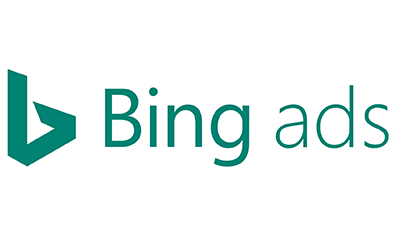
4. Adwords Editor: Adwords Editor is a free tool from Google that allows you to manage your campaigns more easily. It's a great tool if you want to make bulk changes to your campaigns or optimize them quickly.
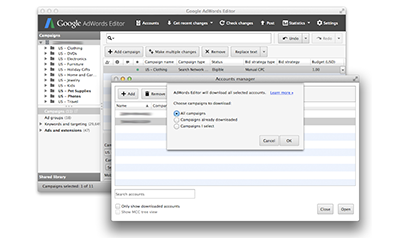
5. Campaign Management Tools: Campaign management tools are a great way to save time when managing your campaigns. These tools allow you to create and optimize campaigns quickly, as well as monitor their performance. Some popular campaign management tools include Marin Software and Optmyzr.
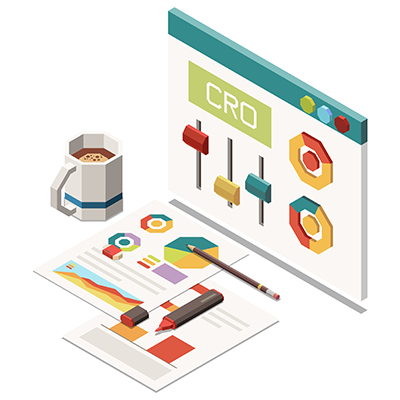
6. Keyword Research Tools: Keyword research tools are essential for any successful search engine marketing campaign. These tools help you to find the most relevant and popular keywords for your campaigns, so you can target the right audience. Some popular keyword research tools include Keyword Planner and SEMrush.

7. Backlink Analysis Tools: Backlink analysis tools help you to monitor the backlinks pointing to your website and analyze their quality. This can help you identify areas where you can improve your link building efforts and get more traffic. Some popular backlink analysis tools include Majestic SEO and Ahrefs.

These are some of the best SEM tools that you can use to optimize your campaigns and get better results. With the right tools, you can save time and maximize your efforts to get the best results.
How to Measure SEM Performance?
Measuring SEM performance is an essential part of any search engine marketing (SEM) campaign. Without it, you won't know if your efforts are paying off or if you need to make adjustments to your approach. Performance metrics provide insight into the effectiveness of your SEM campaigns and can be used to track progress and optimize your efforts.
To measure SEM performance, there are a variety of metrics that can be used. These metrics include cost-per-click (CPC), click-through rate (CTR), conversion rate (CVR), cost-per-acquisition (CPA), and return on ad spend (ROAS). Let’s take a closer look at each of these metrics and how they can be used to measure the performance of your SEM campaigns.
Cost-Per-Click (CPC):
CPC is the cost of each click that an ad receives. The higher the CPC, the more expensive it is to generate a click. This metric is useful for measuring the cost-effectiveness of an ad campaign. A higher CPC may indicate that an ad is not reaching the right audience or that the ad is not optimized for conversions.
Click-Through Rate (CTR):
The CTR is the ratio of clicks to impressions. This metric measures how often an ad is clicked on when it is displayed. A higher CTR indicates that an ad is reaching the right audience and is performing well. A lower CTR may indicate that an ad needs to be optimized or that it is not reaching the right audience.
Conversion Rate (CVR):
The CVR is the ratio of conversions to clicks. This metric measures how often an ad leads to a conversion. A higher CVR indicates that an ad is optimized for conversions and is performing well. A lower CVR may indicate that an ad is not reaching the right audience or needs to be optimized for conversions.
Cost-Per-Acquisition (CPA):
The CPA is the cost of each conversion that an ad receives. This metric is useful for measuring the cost-effectiveness of an ad campaign. A higher CPA may indicate that an ad is not reaching the right audience or that the ad is not optimized for conversions.
Return on Ad Spend (ROAS):
The ROAS measures the return on investment (ROI) of an ad campaign. This metric is calculated by dividing the total revenue generated by an ad campaign by the total cost of the ad campaign. A higher ROAS indicates that an ad campaign is performing well and is delivering a positive return on investment. A lower ROAS may indicate that an ad campaign needs to be optimized or that it is not reaching the right audience.
These are just a few of the metrics that can be used to measure the performance of an SEM campaign. By tracking these metrics, you can gain insight into the effectiveness of your campaigns and make adjustments to optimize performance. With the right metrics and an effective optimization strategy, you can maximize the performance of your SEM campaigns and get the most value out of your SEM budget.
The Don'ts of SEM Campaign
SEM campaigns can be incredibly effective tools for driving traffic and increasing sales. But if you’re not careful, they can be costly and ineffective. Here are the top don’ts of SEM campaigns that you should keep in mind if you’re planning to launch a successful campaign.
- Don’t neglect keyword research: Keywords are the foundation of any effective SEM campaign, so it’s important to take the time to research the best keywords for your business. Make sure to focus on long-tail keywords that are relevant to your industry and have a good search volume.
- Don’t ignore the competition: Before launching an SEM campaign, it’s important to do a competitive analysis to understand what the competition is doing and how you can differentiate your campaigns to stand out from the crowd.
- Don’t forget to set goals: Without concrete goals, it’s impossible to measure the success of your campaigns. Make sure to set realistic goals and track your progress to ensure that you’re on track to reach them.
- Don’t underestimate the importance of ad copy: The ad copy is just as important as the keywords when it comes to SEM campaigns. Make sure that your ad copy is compelling and clear, and that it includes a call to action that encourages the reader to click through to your website.
- Don’t ignore the user experience: Once a user has clicked through to your website, it’s important to make sure that they have a positive experience. If your website is difficult to navigate or contains outdated information, you’ll likely lose potential customers.
- Don’t forget to track your results: It’s important to track the performance of your campaigns in order to understand what’s working and what’s not. Make sure to set up tracking codes for each campaign so that you can view detailed analytics.
- Don’t be afraid to experiment: Don’t be afraid to experiment with different keywords, ad copy, and landing pages to see what works best for your business. It’s often a good idea to try different approaches to see which ones yield the best results.
By following these don’ts of SEM campaigns, you’ll be able to create successful campaigns that drive traffic and increase sales. Just remember to stay up to date on the latest SEM trends and to track your results to ensure that you’re getting the most out of your campaigns.
Mantras for Success SEM Campaign
Mantras are a powerful tool that can help you with your success in SEM campaigns. They are short, easy to remember phrases that can help guide your actions and thoughts towards successful outcomes. They can help you focus on the right things, stay motivated, and keep your campaigns on track.
When it comes to success in SEM campaigns, mantras can be especially helpful. They can help you stay on track, keep your goals in sight, and remind you of the importance of staying focused on the task at hand. Here are some mantras for success in SEM campaigns that can help you get the most out of your efforts:
- “Focus on Quality, Not Quantity.” This mantra reminds you to focus on the quality of your campaigns and ads, rather than the quantity. Quality is important in SEM campaigns because it’s what will drive the most value for your campaigns.
- “Be Adaptable.” Things change quickly in the world of SEM, so it’s important to be able to adapt quickly to changes in the market. This mantra reminds you to stay on top of trends, adjust your campaigns accordingly, and remain agile.
- “Be Patient.” Success in SEM campaigns takes time. This mantra reminds you to stay patient and not get discouraged when things don’t happen right away.
- “Think Long-Term.” When you’re running SEM campaigns, it’s important to think about the long-term outcome of your efforts. This mantra reminds you to think about the big picture and how your campaigns can help you reach your goals in the future.
- “Test, Test, Test.” This mantra reminds you to test your campaigns and ads regularly to ensure that you’re getting the most out of them. Testing can reveal opportunities for improvement and help you optimize your campaigns for better results.
These mantras can help you stay focused on the right things and stay motivated in your efforts to succeed in SEM campaigns. Remember to focus on quality, be adaptable, stay patient, think long-term, and test, test, test. With the right approach, you can maximize the success of your SEM campaigns.
Conclusion
Search engine marketing (SEM) is an essential component of any digital marketing strategy. It involves the use of two main elements: organic search engine optimization (SEO) and paid search engine marketing (PPC). By utilizing both elements, businesses can optimize their online presence and increase visibility to potential customers.
The goal of SEM is to drive more traffic to your website and ultimately generate more leads and sales. To achieve this, businesses must create optimized content, use the right keywords, and carefully structure their campaigns. Additionally, they must also manage their budget and track their results.
Through organic SEO, businesses can improve their ranking on search engine results pages (SERPs). This will help them increase their visibility and hopefully gain more clicks. However, SEO takes time and requires ongoing effort to keep up with the changing algorithms.
On the other hand, PPC is a more immediate way to increase visibility. By bidding on relevant keywords, businesses can get their content in front of their target audience faster. This can help them quickly grow their online presence and generate more leads and sales.
Overall, SEM is a powerful tool for any digital marketing strategy. Through SEO and PPC, businesses can improve their visibility and increase their traffic. Additionally, they can also manage their budget and track their progress. With the right strategy and careful management, businesses can make the most out of their online presence and maximize their return on investment.

Written by: Jitendra Raulo
Jitendra Raulo is the Founding Director at Aarav Infotech India Pvt. Ltd., a leading Web Design and Digital Marketing Company with 11+ years of experience and having headquarter in Mumbai, India, and Support Centre at Bhubaneswar, India, he is actively working with Start-ups, SMEs and Corporations utilizing technology to provide business transformation solution.




